| Designation: | AMX-10RC |
 |
|---|---|---|
| Manufacturer: | Nexter | |
| Product type: | Armoured Vehicles | |
| Name: | Reconnaissance Vehicle |
The AMX-10RC reconnaissance vehicle was designed from September 1970 at the Atelier de Construction d'lssy-les-Moulineaux to meet a French Army requirement for a vehicle to replace the Panhard EBR (8 x 8) heavy armoured car. The first of three chassis was completed in June 1971.
Four TK 105 turrets were built. Many of the automotive components of the AMX-10RC are identical to those used in the tracked Giat Industries AMX-1 OP IFV.
The AMX-10RC equips the reconnaissance regiments of the corps of the French Army, the armoured regiments of the rapid deployment forces and the cavalry regiments of the infantry divisions. The first unit to be equipped with the vehicle was the 2eme Regiment de Hussards based at Sourdun, which received its complement of vehicles in 1981-82.
The original French Army requirement was for 525 AMX-10RC vehicles, with the first pro'duction order being placed in 1976, but for a number of reasons only 337 vehicles were ordered. The 12 vehicles for Qatar were from the French Army order so another batch of 12 vehicles was built for the French Army, with final deliveries completed in 1994.
Total production of the AMX-10RC for the home and export markets amounted to 457 vehicles. Production of the turret was undertaken at Tarbes while chassis production and final assembly was undertaken at Roanne. Both these facilities are part of Giat Industries.
Deployment of the AMX-10RC in the French Army is as follows:
1st Army, one army corp with one regiment of 48 vehicles with an additional regiment of 48 vehicles for the Franco-German Brigade.
Force d'Action Rapide (FAR), 6e DLB, with two regiments (REC and 1st Spahis) each with 36 vehicles.
Two infantry divisions with one regiment of 48 vehicles
each.
Training light divisions, 24 vehicles.
Morocco placed an order for 108 AMX-10RC vehicles modified to meet local operating conditions in 1978 and first vehicles were delivered in 1981 for training.
The AMX-10RC was deployed by the French Army in Chad during Operation Manta between August 1983 and November 1984.
The AMX-10RC was also deployed by the French Army in the Persian Gulf during Operation Desert Storm. Two AMX-10RC regiments of the 6th Light Armoured Division made it possible for the US Army XVIIIth Corps to entrust the French Daguet Division with the very important west coverage mission in Iraq for the entire allied forces.
Since it was first introduced into service with the French Army in 1979, the AMX-10RC has been constantly improved. A new engine, improved ammunition and additional armour protection have been introduced.
In 1994 it was revealed that a batch of improvements was under development forthe French Army including:
(1) Installation of a Giat Industries 105 mm G2 gun firing NATO standard ammunition
(2) Installation of a thermal camera
(3) Fitting of a decoy system
(4) Additional armour protection
(5) Installation of a central tyre inflation system
(6) Installation of an electronic control system for the gearbox
(7) Installation of a Land Battle Management System (LBMS).
Due to cutbacks, the French Army has now decided not to go ahead with all seven parts of this upgrade although it is possible that a much more limited upgrade will now go ahead.
For Operation Desert Storm, the recapture of Kuwait in 1991, some AMX-10RC vehicles were fitted with additional passive armour to their frontal arc with an anti-tank guided weapon decoy system being mounted on the front left side of the turret.
It has been confirmed that the 105 mm F2 gun will be retained and that consideration is being given to the installation of thermal cameras removed from AMX-30B2 MBTs to replace the current low light level TV camera.
For French Army trials an AMX-10RC has already been fitted with a Land Battlefield Management System (LBMS) as has a Giat Industries Leclerc MBT.
The LBMS is already standard on all production Giat Industries Leclerc MBTs for the United Arab Emirates and in this application is called FINDERS (Fast Information, Navigation, Decision, and Reporting System).
Giat Industries is no longer marketing this vehicle but is now concentrating its efforts on the VEXTRA (8 x 8) fitted with the TML 105 105 mm turret. Details of this are given in the previous entry.
The Giat Industries TML 105 mm turret is also being marketed for installation on a wide range of other chassis, tracked and wheeled with the latter including the Swiss MOWAG Piranha Armoured Combat Vehicle (10x10).
The all-welded aluminium hull and turret provides the crew with protection from small arms fire, flash burns and shell splinters. The driver is seated at the front of the vehicle on the left side and is provided with an adjustable seat and a large single-piece hatch cover, that opens to the right. There are three day periscopes. the centre one of which can be replaced by a passive OB-31A periscope for night driving.
The turret is in the centre of the vehicle with the commander and gunner seated on the right and the loader on the left. Both the commander and the loader are provided with a single-piece hatch cover that opens to the rear and the loader has three periscopes, one to the front, one to the left and one to the rear. The vehicle commander has six periscopes for all-round observation and a periscope and panoramic M389 telescope with magnifications of x 2 and x 8 which has 360° full rotation and enables the commander to observe the target regardless of the position of the turret. The M389 can be elevated from -12 to +24° and has automatic projection of graticules, x 2 for the machine gun and x 8 for the 105 mm gun. The commander also has overriding controls enabling him to lay the gun onto the target. The gunner has three periscopes and an M504 telescope manufactured by SOPELEM and Compagnie Industrielle des Lasers (CILAS) which is the main part of the fire-control system. The M504 has a magnification of x 10 and is combined with an optical compensator wfth control electronics for automatic input of fire corrections, an M550 laser range-finder and an M553 boresight unit which corrects for any abnormal droop or accidental misalignment of the main armament.
The complete COTAC fire-control system comprises various sensors which provide the computer with the following data: target distance as measured by the laser range-finder with an accuracy of ±5 m between 400 and 10,000 m; horizontal and vertical speed of the target; angle of cant of the vehicle and windspeed, altitude, outside and gun temperatures, which are fed into the computer manually.
In a typical target engagement the gunner aligns the sight with the target, tracks the target and depresses the measuring button for two or three seconds, the time taken for the target information to be fed into the computer. The introduction of fire correction data takes only 1.5 seconds and the gunner opens fire.
There are three modes of engagement, COTAC, tank laser sight and graticule judgement.
For night engagements the AMX-10RC is fitted with a Thomson-CSF Model DIVT 13 LLLTV. The system consists of a television camera mounted in the mantlet to the left of the main armament, an electronics unit, a control unit and two television screens, one for the commander and the other for the gunner. An aiming graticule is generated electronically and superimposes itself on the monitor screen. The deviation computer of the COTAC fire-control system then introduces fire correction data and shifts this aiming graticule by the required value under the same conditions as for the day graticule.
For Operation Desert Storm, Giat Industries supplied the French Army with the Thomson-CSF DIVT 16 thermal camera as a replacement for the DIVT 13. This option enabled observation and identification to take place at ranges of up to 4,000 m.
The integrated test system of the modular fire-control system enables any fault to be quickly located and the defective unit replaced. A test case makes it possible to locate within a unit the defective subassembly which is then replaced.
The engine at the rear of the hull is coupled to the gearbox through a hydraulic torque converter with a cut out clutch. The gearbox has three functions:
(1) Gear shifting with four ratios in both directions
(2) Auxiliary drive for the two water-jets
(3) Steering with epicyclic gears and hydraulically actuated brakes.
The AMX-10RC is skid-steered in a similar manner to the tracked AMX-1 OP.
In 1983, it was confirmed that the last production batches of AMX-10RC vehicles for the French Army would be fitted with the Baudouin Model 6F 11 SRX diesel engine which develops 280 hp, in place of the standard Renault-built HS 115 diesel that develops 260 hp at 3,000 rpm. In addition to being a more powerful engine the Baudouin is more fuel efficient, which will give the vehicle a larger operating range of 1,000 km.
By 1995, all the French Army vehicles were fitted with the Baudouin 6F 11 SRX diesel engine.
The hydropneumatic suspension system, designed and manufactured by Messier Auto-Industrie, can be quickly adjusted by the driver to suit the type of ground being crossed, this being accomplished without the driver leaving his seat.
The minimum ground clearance is 210 mm, but for road travel 350 mm is normal, with 470 mm for crosscountry travel and 600 mm for amphibious operations.
The suspension at each wheel station consists of a roadwheel arm and suspension assembly (link rod, level and cylinder with the cylinder acting as spring and shock-absorber and allowing the height to be adjusted). The suspension cylinders are supplied by a hydraulic pump. The tyre pressure can be adjusted to suit the type of ground being crossed, this being accomplished without the driver leaving his seat.
The AMX-10RC is fully amphibious, being propelled in the water by two water-jets either side of the rear of the hull. Before entering the water a trim vane is erected at the front of the vehicle, with a transparent window in the leftside to allow the driver to see ahead when afloat. The vehicles delivered to Morocco were not fitted with water-jets.
The NBC system is mounted in the rear of the turret and maintains a slight overpressure in the fighting compartment. For use in cold climates an auxiliary heater is installed.
Main armament of the AMX-1ORC is a Giat Industries 105 mm F2 semi-automatic gun with a vertical wedge breech block and a barrel with a thermal jacket and a two-stage muzzle brake. The gun itself is 48 calibres long without the muzzle brake, has a recoil length of 600 mm and a recoil force of about 13 tonnes. The recoil mechanism comprises a brake on the left side and a counter-recoil mechanism on the right side of the gun. The gun fires four types of Giat Industries fixed ammunition, APFSDS, HEAT, HE and smoke. The APFSDS round uses the penetrator of the 90 mm Giat Industries APFSDS round and has a muzzle velocity of 1,400 m/s. This will penetrate a NATO triple heavy tank target at a range of 2,000 m. The new APFSDS round weighs 13.1 kg complete, the projectile weighing 3.8 kg.
Of 38 rounds of 105 mm ammunition carried, 12 are for ready use in the turret. A 7.62 mm machine gun is mounted coaxially to the left of the main armament. Two smoke grenade dischargers mounted either side of the turret towards the rear are electrically fired from within the vehicle. French Army AMX-1 ORC vehicles have been fitted with a roof-mounted 7.62 mm machine gun.
The turret is equipped with a SAMM CH49 electrohydraulic control system consisting of a servo-controlled cylinder, a flow dividing unit, a servo motor, a hydraulic power source, an electronics box, twin handles for the gunner and a single handle for the commander.
If required, the AMX-1 ORC can be delivered without the air conditioning system, heater, NBC system, night fire-control equipment, navigation system and amphibious capability. The vehicle can also be fitted with a thermal camera to extend observation and identification out to 4,000 m in any weather conditions and a front wheel-mounted self-recovery device.
- AMX-1 ORC driver training vehicle
This is simply an AMX-1 ORC vehicle with its turret removed and fitted with a fully enclosed cabin for the instructor and several other students.
- AMX-1 ORC 105 TML
This turret, of which two versions have been developed, has been installed on an AMX-1 ORC (6 x 6) vehicle for trials purposes. This combination is no longer being marketed by Giat Industries.
|
||||||||||||||||||||||||||||||||||||||||||||||||||||||
|
|||||||||||||||||||||
|
||||||||||||||||||
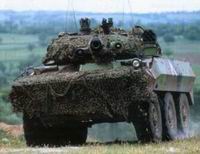 |
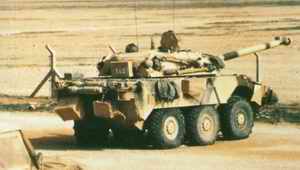 |
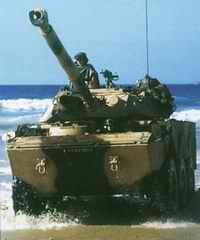 |
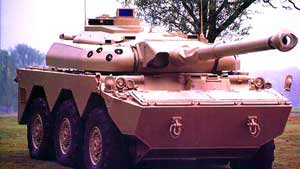 |
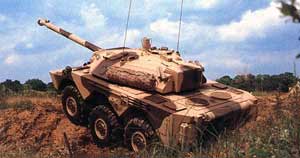 |
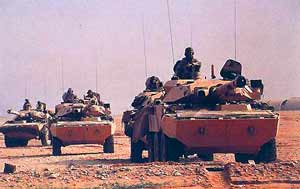 |
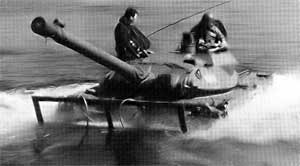 |
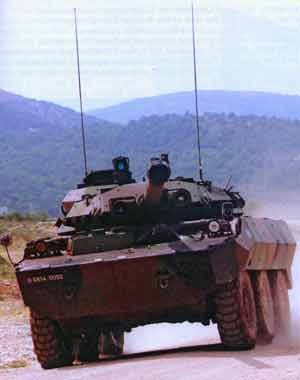 |
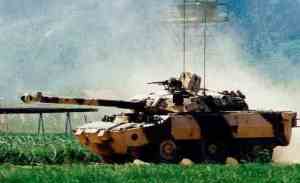 |
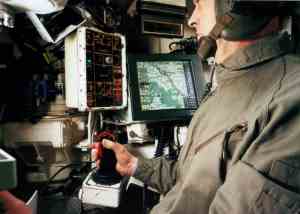 |
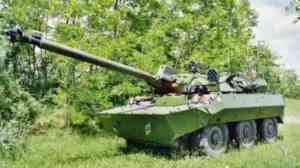 |


